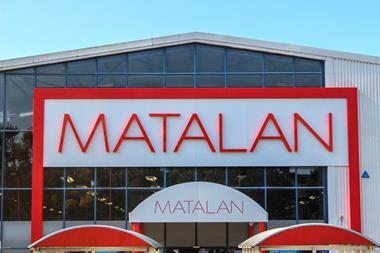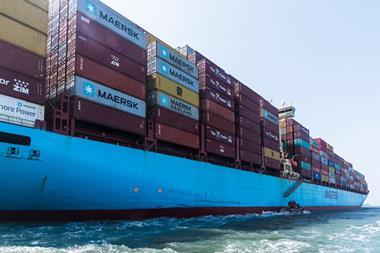As the tensions in the Red Sea continue to escalate, Retail Week looks at how retailers are dealing with supply chain disruptions and the options on the table to mitigate potential price rises and availability issues.

Since November, armed Houthis, a political and military movement in Yemen, have been launching armed attacks against international shipping in the Red Sea, a key corridor to the critical Suez Canal.
Ever since, supply chains from Southeast Asia and the Far East to Europe have been disrupted as international logistics giants including Maersk have been forced to re-route.
Experts are now saying that 80% of shipping is being diverted around the Cape of Good Hope, rather than through the Red Sea, adding over a week to journeys, inflating costs and pushing back lead times.
With increased costs and longer lead times now a certainty, what can retailers do to ensure that the situation doesn’t escalate from an inconvenience to a full-blown retail crisis?
Over the weekend, the US and UK launched a series of coordinated military strikes against Houthi targets in the region. So far, strikes have not improved the situation as, only this week, a US-owned cargo ship was hit by Houthi ordinance.
With Yemen’s Houthis insisting they will continue their aggression in the region until Israel stops its war against Hamas in Palestine, the US and UK haven’t ruled out further military action.
However, as an expert source told Retail Week: “The Saudis have tried to defeat the Houthis with American and British bombs for years, and that hasn’t worked. A few more targeted, Western missile strikes are unlikely to make any difference at all.”
With increased costs and longer lead times now a certainty, what can retailers do to ensure that the situation doesn’t escalate from an inconvenience to a full-blown retail crisis?
Retailers in the red
For retailers looking to import products from Asia to Europe, there are three routes by sea. Shipping products through the Red Sea and then on through the Suez Canal has been the quickest and cheapest route: roughly 9,000 nautical miles from China to Europe.
Shipping around South Africa and the Cape of Good Hope adds some 4,000 nautical miles to the journey – the equivalent of an extra 10 days at sea. The Panama Canal would be the third option, which is roughly a 14,000-nautical mile trip.
Giving a summation of the Red Sea crisis, XPO managing director of the UK and Ireland Dan Myers says the situation has created “volatility in the container market” with prices jumping on average “$3,000 per container.”
This is compounded by the further complication of “additional time required to ship via the Cape of Good Hope, which has disrupted some transit ports.”
Shipping companies are selling slots to the highest bidder. One sportswear retailer is now paying $6,000 for a 40ft shipping container, up from $1,000
Retail Week also understands that due to an ongoing drought, the Panamanian government has been limiting the number of ships passing through the Canal each week.
“They have a system in place whereby shipping companies can book one or a number of slots ahead of time every week. Then they keep a few back every day for those who haven’t booked a slot,” says an insider source.
“So basically, they just sell it to the highest bidder.
“I’ve heard of those slots being bought for $3m at a time because the shipping company in question just doesn’t have any choice. It’s ridiculous sums of money.”
It’s not just buying passage that has become more expensive but the containers themselves.
The source says he knows of at least one sportswear retailer that is now paying $6,000 for a 40ft shipping container from Asia when in November the same-size container would have cost them $1,000.
“It’s not yet got quite to where it was during Covid-19, when some retailers were paying $20,000 a container, but six times [the cost] is still to be reckoned with.”
With added costs and added lead times, there had been concerns among general merchandise, furniture and apparel retailers about the potential longer-term impacts of the situation. But the impacts could have wider knock-on effects across the retail industry.
“The big impact is going to be on the big-asset imports – such as kitchen and white-goods retailers – because with those big-ticket items you can fit less product in each container; so they’re going to need more of them and they’re taking longer to get where they need to be,” they added. “It’s a shit show, frankly.”
Going to extremes
At least in public, most retailers are putting on a brave face. The grocers aren’t expecting any material impact on prices or availabilities, which will come as a relief to many consumers after rampaging food inflation over the last two years.
XPO’s Myers says that retail supply chains have become hugely “resilient, and many businesses have options when it comes to dealing with delays – whether looking at alternative modes to move goods to fill short-term availability issues or alternative geographically more favourable suppliers.”
However, some retailers are already flagging the potential longer-term issues. Sofa-in-a-box brand Swyft CEO Kieran Hewkin told Retail Week: “Certain fabrics will go out of stock and are unavailable to order. We got caught short a couple of times in the last eight weeks, where everything was supposed to land tomorrow and then just suddenly, it was actually going to be a month late.
“We’ve had to do some air freight, which does cost a fortune, for some of our parts. There are some components for our sofas that, without them, we can’t sell anything unique to us so we’re kind of left with no choice. If we run out of the locks that hold our sofas together, then that’s really, really expensive.”
Alongside hugely expensive air freight, some retailers are looking at reviving dormant nearshoring supply chains that haven’t been used since the worst of the covid pandemic.
While the situation hasn’t yet reached desperation point for many UK and European retailers, some brands are being forced to look to extreme solutions. “I know of one electricals retailer who has decided to ship product from Asia through the Panama Canal to Los Angeles,” says the insider source.
“They’ve then loaded that onto a train to take it by rail to New York, across the US, then loaded that onto a plane to fly it over the Atlantic to Europe.”
Nightmare before next Christmas
Whatever retailers do to mitigate the risk, there is already some damage baked into supply chains from now until at least the spring.
“If this thing stopped today and shipping started going through the Suez Canal tomorrow, you’d still be looking at issues unwinding into the spring,” said a source at one retailer.
If the active situation drags on – possibly into the spring and even the summer – then retail stock positions could be affected ahead of next Christmas
“If everything went back to normal tomorrow, you’d still have backlogs everywhere: backlog of customers, congestion at ports and containers all over the place.”
A source at a specialist retailer agrees and says the real worry for retailers is if the active situation drags on – possibly into the spring and even the summer – then stock positions could be affected ahead of next Christmas.
“At the moment we’re seeing delays of between three to four weeks on anything from that part of the world.
“We came out of Christmas with a really strong stock position, though, so we’re not seeing any availability issues, touch wood.
“The worry is, it’s probably going to take a good four to six months to normalise, so we could find ourselves in a situation where that might start to impact preparations for next Christmas. That’s probably more of an issue.”
While some disruption is now inevitably baked into supply chains, retailers will be crossing their fingers and hoping the situation is resolved soon. If we’re still here in the summer, then 2024 Christmas stock levels might be looking a lot barer than they have since the worst days of the global pandemic.


























No comments yet